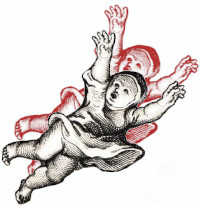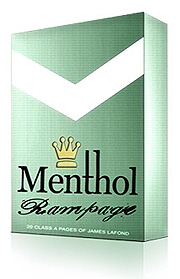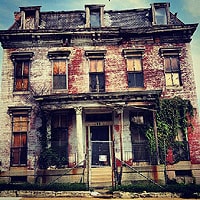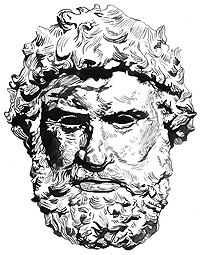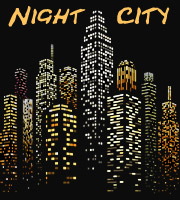I like a card table for the basic game. Most full scale battle spaces, for the period that is the focus of this design, would be better served by a long table with the opposing forces taking either side. This applies more to ancient battles where there was a tacit agreement to fight, and to major actions in which the huge armies of the Napoleonic Era and American Civil War fought in valleys that had been largely under cultivation.
Introductory play should be done on a card table or on one end of a long table.
Determine how many coasters will be used with the roll of a die. These are elevation features.
Determine how many napkins will be used with the roll of a die:
1 = 0
2-3 = 1
4-5 = 2
6 = 3
Napkins are used to represent water, habitation and vegetation.
-1. Flip a coin for each coaster and napkin, with the winner deciding its placement.
-2. Napkins may be marked with a symbol to indicate:
-a. village or estate
-b. woods
-c. wetlands
-d. lake
-e. a napkin might be unfolded and refolded like a bandanna and taped down as a creek of river. Make certain that the creek exits both sides of the battle space or terminates in a lake or wetland on one end. An artistic fellow should be able to make a swamp and river out of one napkin. The napkin must be kept in one piece. Don’t be a dick and make a village and creek out of a single napkin.
Hard terrain features, such as ashtrays, may be used to represent peaks or ancient walled cities, which are “impassible” by organized bodies of combatants within the time frame of a tactical action.
Elevation Note
If you place a coaster to represent a higher elevation, and I get to place the next coaster, I may stack the coasters to represent a higher feature. Elevations may be increased to three levels.
Terrain Effects
Terrain features have three types of effects:
-1. On Movement
-2. Cover
-3. Advantage
Effects are cumulative. For instance, a unit on an elevation that placed in a wood, has cover and advantage, as does a unit in a wood that is being attacked across a creek.
…
Movement
Units move by expending movement points.
Each type of unit has a standard movement rate.
Movement is measured by using the blank domino.
Terrain that impedes movement for a certain unit type causes that type of unit to expend an additional point to enter, cross [in case of a creek] or move through, but not to leave, that feature. Elevation only impedes movement while the unit gains that elevation.
Terrain that blocks movement may not be entered by that unit type.
Movement Rates
Battery = 2
Battalion in Line = 3
Battalion in Column = 4
Company of Foot = 5
Troop of Horse = 6
Battalions that end their movement with 1 point remaining, that are at least one domino away from an enemy unit, may reform from line to column or from column to line.
Elevations
All unit types are impeded while gaining elevation.
A decrease in elevation does not impede.
Once upon an elevation, movement is not impeded.
Note: since a battery has but 2 movement, it may not move onto an eminence unless a card is pulled that facilitates increased movement. Hence the importance of placing batteries upon high ground during the marshaling phase.
…
Habitations
Villages, farms and manors have played more important battle roles in the Age of Gun Powder than in ancient or medieval warfare. These are worth occupying and have no negative effect on movement, with one exception: When a habitation is placed straddling a creek, then unit crossing is only impeded if an enemy unit occupies the far side of the bridge that is assumed to be there, and may indeed be the village’s reason for being.
…
Woods
Battery = blocked [May be placed in the marshaling phase facing out of a wood.]
Battalion in line = impeded
Battalion in column = blocked
Company of Foot = impeded
Troop of Horse = impeded
…
Creek
Battery = blocked
All other types = Impeded
…
Swamp or Marsh
Battery = blocked
Battalion = blocked [This has as much to do with the rigid hierarchical social condition of the unit as with its heavier weapons.]
Company of Foot = impeded
Troop of Horse = impeded
Lakes
This feature is impassible by all units within the time scale of the game. Water crossings by boat may be represented in the marshaling phase, by placing Companies with their back to the lake. Only companies of foot may be deployed in such a fashion.
…
Cover
This concept is purely defensive and represents a terrain feature’s defensive value to units occupying it when fired upon. In the Black Powder Era, from 1648 to 1815, most units have firepower, excepting only some types of horse. Firepower is here broken into only two types:
-1. battery
-2. musketry
Cover is expressed by the defender having the option of having the attacker set aside the card drawn and draw another, something usually expressed in re rolls in table top games.
All types of terrain occupied by a unit being fired upon grant cover equally against battery and musketry, except that a habitation has no defensive value against battery fire, the easily sighted buildings providing shrapnel for the cannonballs.
A unit occupying two types of terrain, such as a creek and village, or a forested elevation, has a second option of having the firing player pick an alternate card.
…
Advantage
This concept concerns hand to hand combat; the crossing of bayonets, lances and sabers, and the vicious aspects of tribal warfare in the American Revolution.
Any charge up an elevation grants advantage to the defender, as the charge down an elevation grants it to the attacker.
The interaction of troop types within vegetation and habitation zones is more complicated. In hand to hand combat, the advantage schemes below will determine what unit type has the advantage.
Advantage is expressed as an additional card draw, with the advantage player taking two cards and playing both. The first type listed has advantage over all others below.
When occupying two types of terrain the defender decides which terrain type governs advantage.
…
Open Terrain
Battalion in Column
Battalion in line
Troop of Horse
Company of Foot
Battery
Habitation
Battalion in Line
Battery
Company of Foot
Battalion in Column
Troop of Horse
…
Woods
Battery [It can be set facing from a wood in the marshaling face, but may not maneuver.]
Company of Foot
Battalion in Line
Battalion in Column
Troop of Horse
Creek
Battalion in Line
Battery
Company of Foot
Battalion in Column
Troop of Horse
…
Swamp and Marsh
Troop of Horse: [From Teutonic Knights to Mounted Kentucky Militia, horsemen have proven effective in wetlands, in part because their powder stayed drier than footmen and horses can swim, when many men cannot.] Troops of Horse may not charge in swamp. So there is no double advantage. Charging will be covered in Chapter 4.
Company of Foot
Battalion in Line
Battalion in Column
…
Bridge
[Where a creek and habitation intersect.]
-Battery
-Battalion in Column
-Troop of Horse
-Company of Foot
-Battalion in Line
…
Make sure that you tape your terrain features down. For you pets of the Queen, do it lightly so that you don’t have to have the battle decided by Pallas Athena descending in fiery wrath upon the battlefield—that didn’t work out good for the Trojans or the Achaeans.


